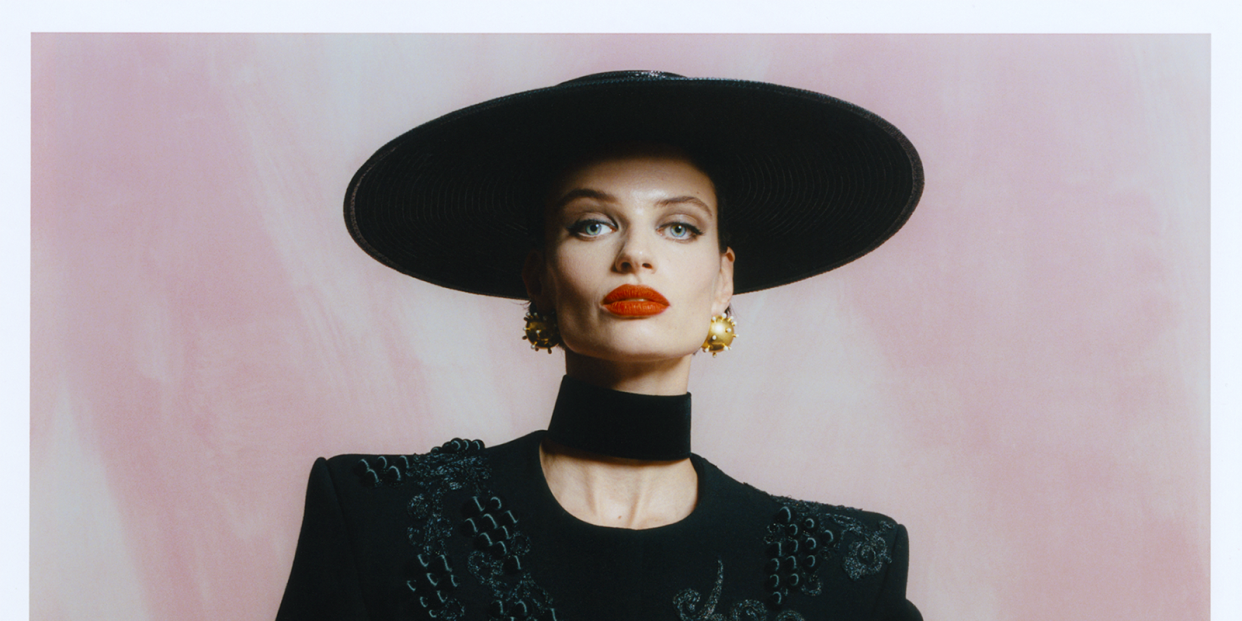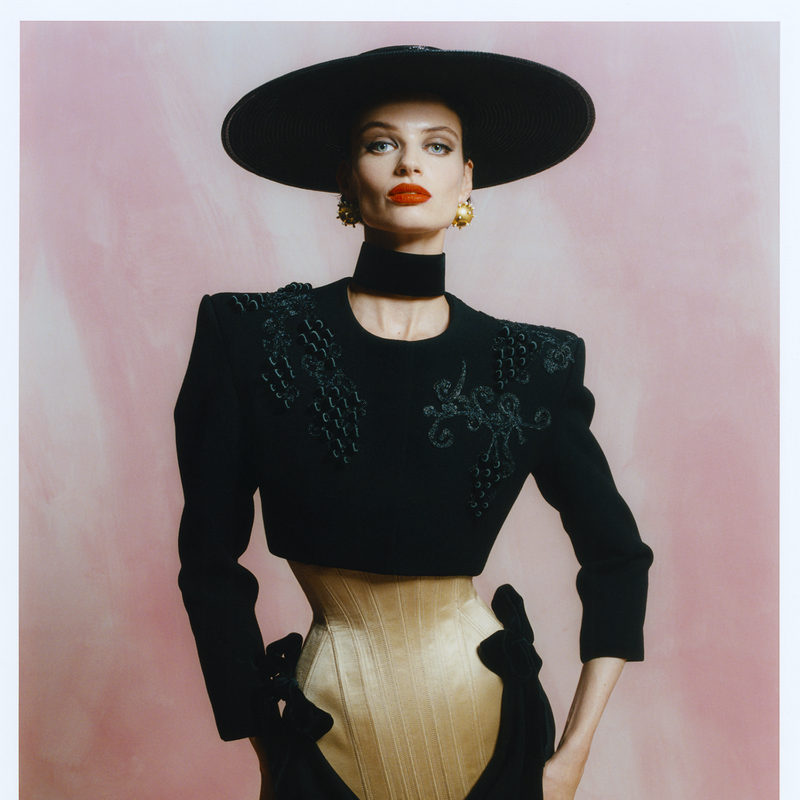How a Schiaparelli Couture Look Gets Made

- Oops!Something went wrong.Please try again later.

Couture is a notoriously labor-intensive process, a luxurious measure of beads, pearls, yards of fabric, and stitches that adds up to incalculable beauty. But where does one even begin when the goal is (dauntingly!) perfection? For Daniel Roseberry, the 37-year-old artistic director of Schiaparelli since 2019, it’s a gut feeling.
With the Fall 2022 collection, he wanted to emphasize tailoring as “a classic idea that grounds all the surrealism” of the boundary-rattling house founded by Elsa Schiaparelli nearly a century ago. Roseberry’s gauntlet-thrower of an opening look: a severe black skirt suit and boater with a champagne corset, kissed on the hips by two velvet bows. The jacket alone took five fittings and over 150 hours to perfect; his first sketch had just the shape of the shoulder.
Between his atelier and the team that helps him cast and style the show, Roseberry oversees a universe of creative and technical puzzles. But amid all those decisions about which black crepe is the right one, he explains, “there’s a ceremony to” the fitting. “And when it’s good, it feels like the Earth stops turning for two seconds.”
Roseberry walks us through the weeks before the world stands still.
First Sketch, eight weeks out (1) At the beginning of each season, I will feed the atelier [sketches of] five or six jackets, and they’ll do quick studies to get—even if it’s technically a mess—just the silhouette. It’s like blurring your eyes and [saying], “Is that the shoulder? Are we going round? Is it a hanger shoulder? Are we going square and straight?” The first sketch was not of a look. It was just of that shoulder.
First fitting, seven weeks out (2) The shoulder is wild. This is a pagoda shoulder in the sense that it has a slight kick but it doesn’t really peak at the end, so the shoulder pad is really short but strong. There’s a bar inside, as well as a piece of boning to [create] an entire structure that looks effortless but required weeks of cutting. Second fitting, five weeks out There was a second sketching session, where I sketched [the jacket] with a really snatched drop-waist pant. The pant felt too serious, so then it became a skirt. The sketches are so important because you have to romance the idea with the atelier. Especially for me not speaking the language [Roseberry speaks mostly English, while the atelier speaks French], I need the sketches to do the talking for me and to seduce them. Because they’ve got to fall in love with the piece. And if they’re not in love with the piece, it’s not gonna work.
Third fitting, two weeks out The minute we saw the jacket with the skirt, even in its crudest form, I knew that was look one. It’s just such a silhouette-driven look. And I think that it’s important to start the show emphasizing silhouettes; it’s the thesis. In this fitting, we are determining the length of the sleeve and the final fit of the body. We had to open the back like 10 centimeters as a vent. We kept it for the final because it was so beautiful and shows the continuation of the lacing [of the corset]. I found this a lot in Elsa Schiaparelli’s work. You would get a sense of the process and the final construction as well. The black velvet bows went on in the third fitting, just to make it more romantic. That’s also when we added the choker and the red, almost orange, lipstick. We asked [milliner] Stephen Jones to send us a few old boater hats so we could see them in fittings, because I wanted this season to be more character driven than last season.
Fourth fitting, one week out (3–8) If you haven’t nailed it by the fourth fitting, something’s wrong. We have the fabrics narrowed down at this point. This [jacket] is just in a black wool crepe, but we have two or three different crepes, and they would do trials of each one. And it’s always the conversation of “Does this fabric like being worked like this?” We found a quality that loved being worked and molded on the shoulder, that felt sharp and easy at the same time. We print out [paper mock-ups of] all the jewelry, and we’re taping earrings, we’re taping bracelets, so that we’re fully placing the accessories as we’re fitting. The jacket we [almost] left plain. Then we [experimented with] an appliqué of black grapes that we got from Lesage—a vintage swatch from Schiaparelli. But the blacks weren’t deep enough. So we launched two trials. One was a black enamel pearl, but it was quite shiny and looked like a black marble. It did not have the same chic [as the vintage swatch]. Then I asked for these black foam balls to be wrapped in black silk thread, like a Christmas ornament
Fifth fitting, two days out (9–12) We do the final placement [of the embroidery], and then it’s embroidered onto the garment. We defined the final length of the sleeves. We ended up making the black velvet bows a little bit bigger as well, a little bit longer. I wanted a little curl for the bows.In a couture fitting, when [the final look] comes out, there’s a ceremony to it. The room goes quiet. There’s applause. It’s like a dance with the atelier, and it’s out of respect also for the amount of hours that have gone into it.
CENTER: LOUIE BANKS; ALL OTHERS (ATELIER AND FITTINGS): KUBA DABROWSKI FOR SCHIAPARELLI;
MODEL: MILA VAN
You Might Also Like

